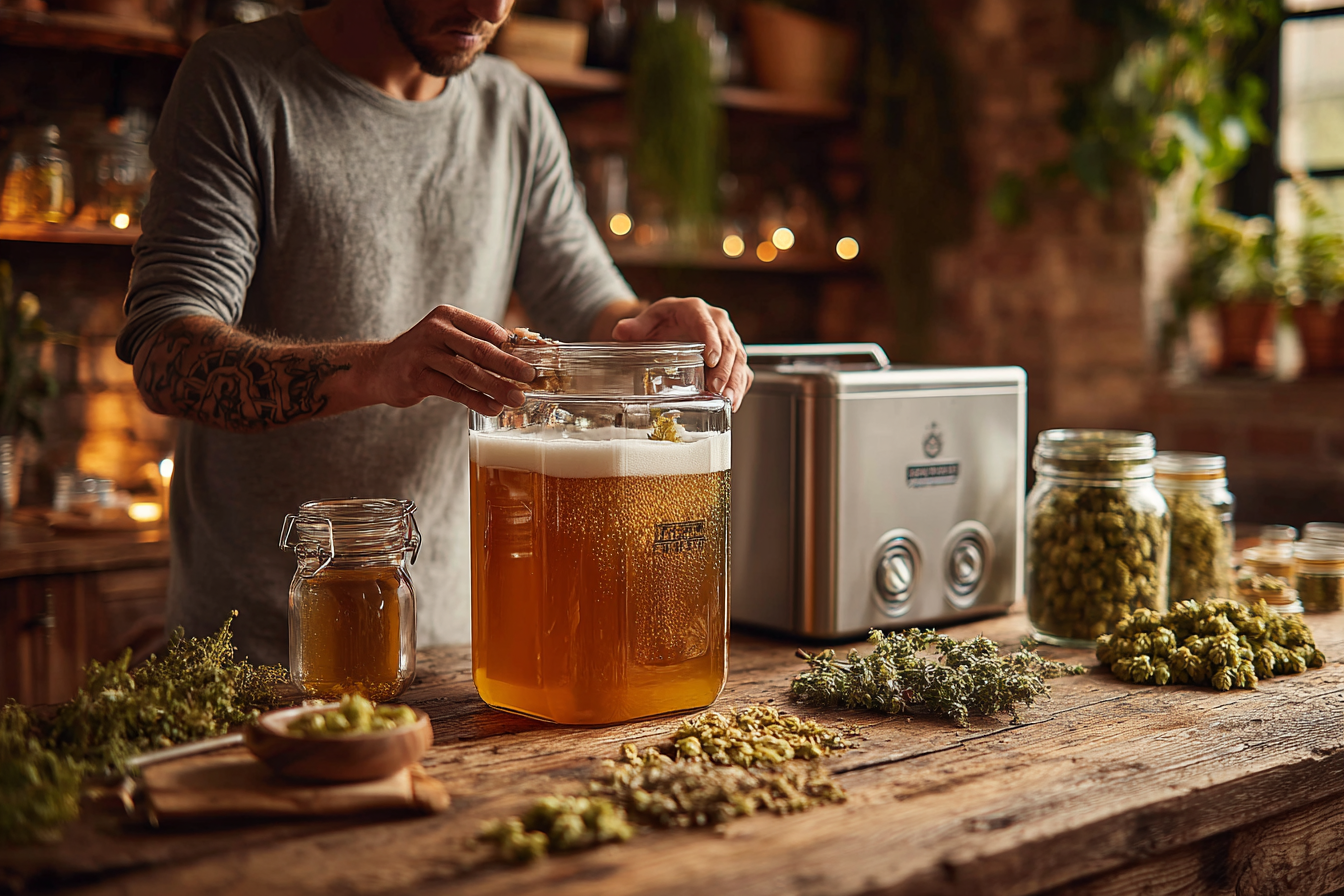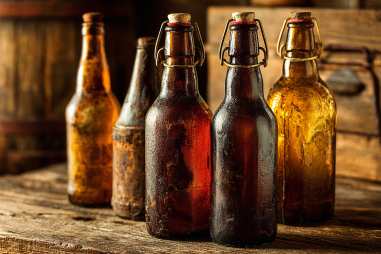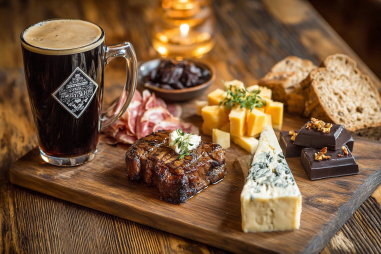Brewing your own American Pale Ale (APA) at home is an exciting journey that combines creativity with precision. This beloved style is known for its vibrant hop character balanced by a smooth malt backbone, making it a favorite among craft beer enthusiasts. Whether you’re a beginner or an experienced homebrewer, mastering the art of APA brewing involves understanding key elements from ingredient selection to fermentation control. Let’s explore essential tips to help you craft an exceptional American Pale Ale that bursts with aroma and flavor.
Choosing the Right Ingredients for APA
The foundation of any great APA starts with quality ingredients. Your choices here will directly impact the flavor profile and overall success of your brew. Focus on selecting fresh, high-quality malts, hops, yeast, and even water that complement the style’s balanced nature.
Start by sourcing fresh hops with well-preserved oils to ensure vibrant aroma and bitterness. Malts should be flavorful but not overpowering—typically a base malt complemented by a small amount of specialty grains. Yeast strains with moderate attenuation and clean profiles help highlight hop characteristics without adding unwanted off-flavors. And don’t forget water: the mineral content should support hop brightness while maintaining smoothness.
Selecting Malt and Hop Varieties
American Pale Ales usually feature a pale malt base such as 2-row barley, which provides a clean and slightly sweet backbone. Adding small amounts of specialty malts like Caramel or Crystal malt (10-20 L) enhances color and adds subtle caramel notes without overshadowing hops. Some brewers experiment with a touch of Munich or Vienna malt for additional complexity.
Hops are the stars of the show in APA. Popular varieties include Cascade, Centennial, Amarillo, and Citra, known for their floral, citrusy, and piney aromas. Balancing bitterness and aroma requires thoughtful additions: early additions for bitterness, and late or dry hopping for aroma. Each hop offers a unique profile, so experiment with combinations that suit your taste but remember to keep the hop intensity balanced for drinkability.
Water Chemistry Basics for APA
Water is a sometimes overlooked but crucial ingredient that greatly affects the final beer. The ideal water profile for APA typically features moderate sulfate levels to accentuate hop bitterness and crispness, balanced with calcium for yeast health and stability.
A typical APA water profile might include:
- Calcium (Ca): 50-100 ppm – supports yeast performance and clarity
- Sulfate (SO4): 100-150 ppm – enhances hop crispness and bitterness
- Chloride (Cl): 50-70 ppm – promotes maltiness and smooth mouthfeel
Testing your tap water and adjusting with brewing salts or distilled water allows you to tailor the profile and improve your beer’s balance remarkably.
Temperature Control During Fermentation
Fermentation temperature plays a pivotal role in the development of flavor compounds. For American Pale Ales, a clean yeast profile is desired to let the hops shine, so maintaining a steady and appropriate fermentation temperature is essential.
Most American ale yeast strains ferment best between 65-70°F (18-21°C). Temperatures too high can produce unwanted esters and fusel alcohols, while too low temperatures can slow yeast activity and cause off-flavors like sulfur. Use a temperature-controlled fermentation chamber or a simple swamp cooler setup to keep consistent temperatures during this critical stage.
Timing Your Hop Additions for Optimal Flavor
Hop timing is an art form in APA brewing. Each addition influences bitterness, flavor, and aroma differently:
- Bittering hops (60 minutes): Added at the start of the boil, these hops provide clean bitterness that balances malt sweetness.
- Flavor hops (15-30 minutes): Added midway or toward the end of the boil to impart hop flavor without too much bitterness.
- Aroma hops (0-5 minutes & whirlpool): Added near the end of the boil or during whirlpool/hop stands to maximize aroma oils.
- Dry hopping: Addition after primary fermentation to boost fresh hop aroma without adding bitterness.
By experimenting with these timings and quantities, you can find the perfect hop balance tailored to your taste.
Avoiding Common Brewing Mistakes
Even seasoned homebrewers can encounter challenges. Here are some common pitfalls to watch out for when brewing APA:
- Using stale hops: Old or improperly stored hops lose their aromatic oils, resulting in muted hop character.
- Over-pitching or under-pitching yeast: Both can stress yeast and create off-flavors.
- Inconsistent fermentation temperatures: Fluctuations can generate unwanted esters or fusel alcohols.
- Insufficient sanitation: Contamination can ruin flavor and clarity.
- Poor water adjustments: Ignoring water chemistry can unbalance bitterness and body.
Pay attention to these areas, and your brews will be far more consistent and enjoyable.
Tips for Clarity, Carbonation, and Mouthfeel
Clarity may not be absolutely necessary for APA, but a bright, clear beer looks more appealing and indicates good brewing practices. Consider cold-crashing your beer after fermentation to encourage yeast and protein flocculation. Using fining agents like gelatin can further aid clarity.
Carbonation levels for APA typically range from moderate (2.3 to 2.7 volumes of CO2), which creates a refreshing mouthfeel without overwhelming the hops. Priming sugar or forced carbonation can achieve this; just ensure appropriate measurements to avoid under- or over-carbonation.
Mouthfeel should be smooth and medium-bodied, with a balance of malt sweetness and hop bitterness. Adjust your malt bill or mash temperatures to influence this – higher mash temps generally make fuller body; lower temps create a drier beer.
Troubleshooting and Improving Your Brew
No brew is perfect on the first try, so be ready to troubleshoot and refine your process. Common issues with APA brewing include:
- Excessive bitterness: Reduce initial hop additions or shorten boil times.
- Dull hop aroma: Improve hop freshness, adjust late hop or dry hop quantities, or shorten boil time of aroma hops.
- Off-flavors like diacetyl or sulfur: Optimize fermentation temperature and yeast health, increase fermentation time if necessary.
- Cloudy beer: Cold crash, use fining agents, or check for yeast strain characteristics.
Keeping detailed notes during each batch helps identify issues and track improvements over time.
Mastering the Art of Homebrewing APA
Brewing a standout American Pale Ale is both a science and an enjoyable craft. By carefully selecting ingredients, understanding water and yeast roles, controlling fermentation, and perfecting hop additions, you’ll be well on your way to producing a beer that boasts crisp bitterness, vibrant hop aroma, and smooth malt balance. Remember, patience and consistency are key. Experiment thoughtfully with each batch, learn from your results, and sip proudly knowing you’ve created a classic American craft beer in your own home.







